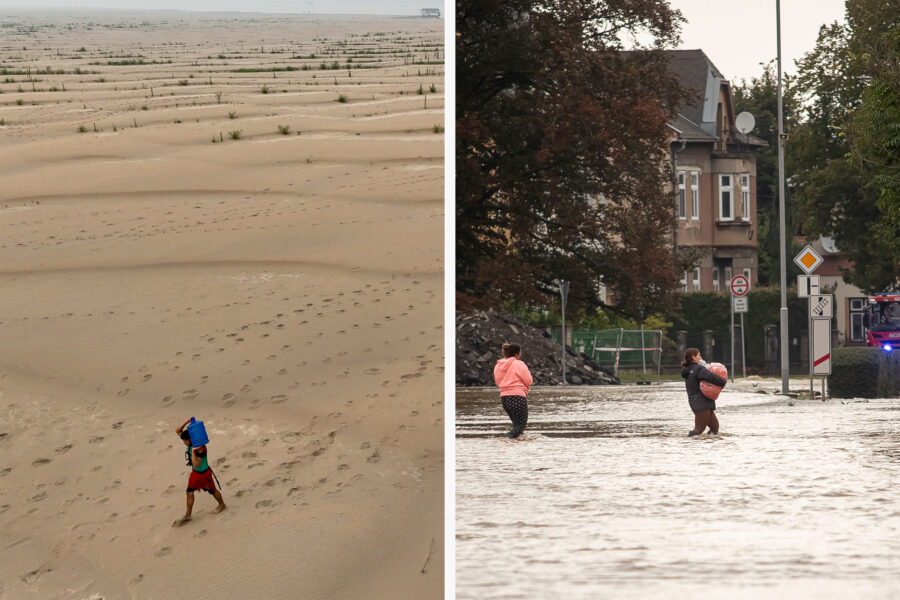How Do Neighbors of Solar Farms Really Feel? A New Survey Has Answers
For people living within three miles of a large solar farm, positive attitudes about the development outnumber negative ones by about a three-to-one margin, according to a new national survey released this week by Lawrence Berkeley National Laboratory.
Some of the results are likely to be encouraging for solar developers, and could be used in local debates to show that community sentiment may favor solar more than is evident just from looking at often-contentious testimony at local public hearings.
But solar opponents also can point to parts of the report that show serious concerns about development. For example, the survey found that people who live within three miles of projects that are 100 megawatts or larger have negative attitudes that outnumber positive ones by about 12 to one.
We’re hiring!
Please take a look at the new openings in our newsroom.
See jobsIn other words, positive sentiment is largely coming from people near smaller projects.
“We’re finding that size matters,” said Sarah Mills, a University of Michigan professor who was part of the team behind the survey. “Bigger is not always better.”
The results are notable at a time when proposals for solar farms often face substantial local opposition. This resistance, seen mainly in rural areas, is a major problem considering that the country needs to vastly expand its use of renewable energy to make a transition away from fossil fuels.
The report is one of the first to look at community attitudes since the boom in solar development of the last few years. It also uses a national sample as opposed to focusing on individual states or regions.
A team that included researchers from Lawrence Berkeley, the University of Michigan and Michigan State University conducted the survey in 2023. The responses came from 984 people in 39 states who live near solar projects built between 2017 to 2021. The projects range in size from 1 megawatt to 252 megawatts.
Among the other findings:
- Fewer than one-fifth of respondents were aware of a solar project before construction began. This indicates that processes for giving notice to people who live near projects are not working.
- The most trusted sources of information are people who live near existing solar projects, community organizations and university staff. The least trusted are solar developers and government officials.
- There was strong support for building solar on disturbed sites such as landfills and former industrial land, and much less support for building solar on areas that are forested or used for farming.
One researcher who was not involved in the survey said the report has left him asking questions that still need answers.
“The fact that [Lawrence Berkeley] is probing the reactions of people living near large solar facilities is great,” said Larry Susskind, a professor of urban and environmental planning at MIT and vice chair of the program on negotiation at Harvard Law School, in an email. “But emphasizing only positive or negative attitudes doesn’t tell us much about what aspects of facility siting create difficulties and unfairness for specific groups. Unless you dig in and cross-tabulate who has what specific reasons for being positive or negative with their income, location, home ownership and other demographic variables, you don’t really learn much that can help public policy-makers, community activists or public officials improve the siting process.”
He and his team at MIT have written extensively about the conflicts that arise around renewable energy developments.
Based on this work as a mediator in such conflicts, he has found that vocal opposition from as little as 15 percent to 25 percent of a community will likely lead elected officials and much of the rest of the community to support their unhappy neighbors, even if many people in the community support solar development as a way to fight climate change.
His point, as it relates to the Lawrence Berkeley survey, is that majority support for solar may not be enough in the face of a motivated minority.
Co-authors of the report said there is still much to learn about what motivates people to support or oppose a local project, and this survey is one part of a larger, long-term effort to improve the level of understanding.
The report is the first of what are likely to be several releases of findings from the survey, likely containing some of the information Susskind is seeking.
Karl Hoesch, a Ph.D. student at the University of Michigan and a co-author of the report, cautioned against using the survey results to make broad statements about whether people support or oppose solar.
“There’s just a lot of nuance there,” he said. “Even within those contexts where there is a lot of opposition, there are also neighbors that maybe aren’t showing up to those meetings, and maybe are quietly positive” toward solar development.
Share this article
Disclaimer: The copyright of this article belongs to the original author. Reposting this article is solely for the purpose of information dissemination and does not constitute any investment advice. If there is any infringement, please contact us immediately. We will make corrections or deletions as necessary. Thank you.







